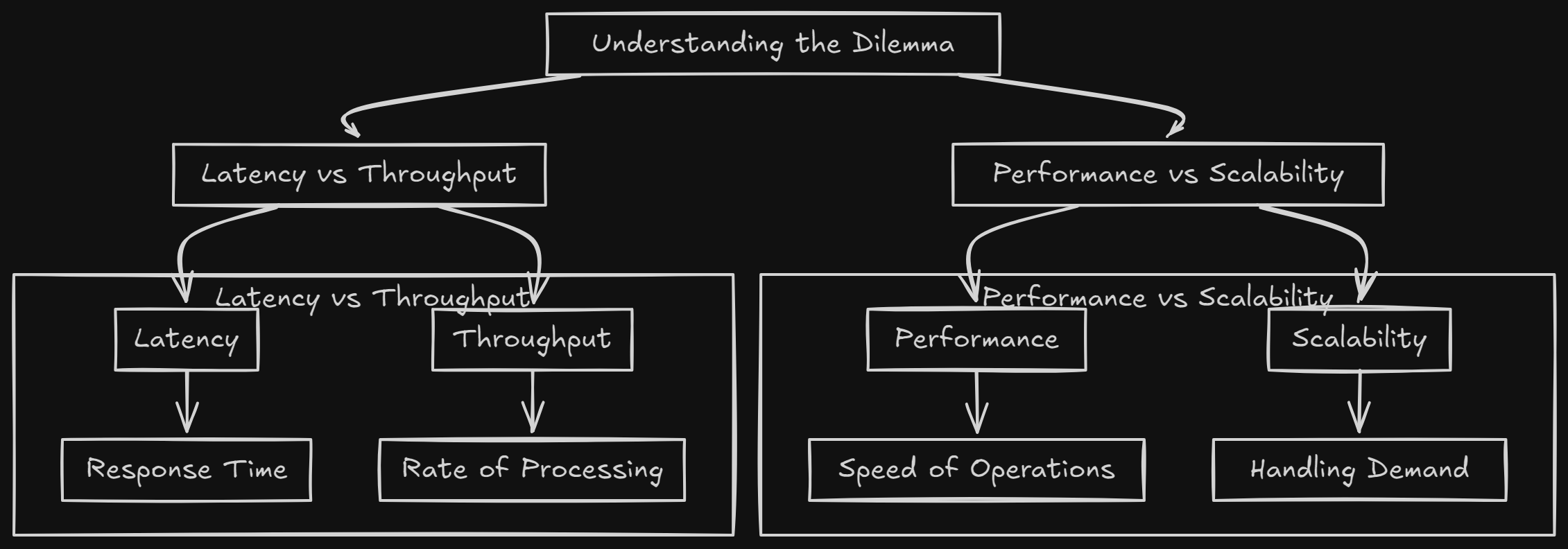System Design: Performance, Scalability, Latency, and Throughput
 Priyank Sevak
Priyank Sevak
Imagine you're tasked with a monumental feat: painting your house. You grab a brush and estimate it'll take a grueling 48 hours. But what if you enlist a friend? Together, you might halve the time to 24 hours. Now, picture a whole crew of six – could they tackle the job in just 4 hours?
This lighthearted math problem holds a deeper lesson for online shopping websites. Just like painting a house, handling website traffic requires resources. The number of visitors browsing your online store directly impacts performance – how quickly pages load and how smoothly the shopping experience flows.
Here's where the concepts of scalability and performance come into play. A website is scalable if adding resources (like more servers) improves performance proportionally. In our painting analogy, adding more painters speeds up the task. However, scalability isn't always a linear equation. Imagine adding ten extra painters – would they all work efficiently, or create more chaos than progress?
Performance vs. Scalability: A Delicate Balance
In the realm of e-commerce, performance refers to how quickly a website responds to user requests. It's about ensuring a seamless shopping experience, from product browsing to checkout. Scalability, on the other hand, is the ability to handle increasing traffic without compromising performance. It's about growing your customer base.
A service is said to be scalable when increasing the resources results in a proportional increase in performance. Adding more servers should lead to a commensurate improvement in website speed and responsiveness.
However, scaling isn't always straightforward. Sometimes, optimizing for performance might require sacrificing scalability, or vice versa. For instance, caching can significantly boost performance but might introduce scaling complexities.
Latency and Throughput: The Performance Metrics
Two key metrics influence a website's performance: latency and throughput.
Latency is the time it takes for a request to be fulfilled. A low latency means a quick response time, essential for a smooth user experience.
Throughput measures the number of requests a system can handle per unit of time. High throughput is crucial for handling peak traffic.
Ideally, we aim for minimal latency and maximum throughput. However, these metrics often have a trade-off. Adding more servers can increase throughput but might introduce network latency.
A Real-World Example: The Login Page
Consider a simple login page on an e-commerce website. To handle increased traffic, we can add more servers to distribute the load. This improves throughput as more login requests can be processed simultaneously. However, user data might need to be replicated across these servers, potentially introducing a slight delay (increased latency) in retrieving and verifying login credentials.
To mitigate this, we can employ techniques like caching frequently accessed user data and using load balancers to distribute traffic efficiently.
Conclusion
Balancing performance and scalability is a continuous challenge in e-commerce. Understanding the relationship between latency and throughput is crucial for making informed decisions. By carefully considering your website's specific requirements and utilizing appropriate technologies, you can create a robust and efficient online shopping experience.
Remember: Scaling isn't just about adding more servers; it's about optimizing your entire system architecture.
Resources:
Subscribe to my newsletter
Read articles from Priyank Sevak directly inside your inbox. Subscribe to the newsletter, and don't miss out.
Written by

Priyank Sevak
Priyank Sevak
I'm a passionate software engineer with a strong foundation in both Salesforce development and traditional programming languages. My journey began with a Master's in Information Technology, and I've since honed my skills through diverse experiences, from game development to IT support. Currently, I'm a Software Engineer at Foundever, where I leverage Salesforce to build robust applications that streamline business processes. Prior to this, I played a key role in developing a custom Asset Management Tool for the company. My love for coding extends beyond Salesforce. I enjoy building web applications with technologies like React.js and Node.js, and I'm constantly exploring new ways to push the boundaries of my programming knowledge. Here's what I bring to the table: Salesforce Expertise: Adept in building robust Apex classes, triggers, Visualforce/Lightning pages, and more. Full-Stack Development: Proficient in JavaScript, Python, C#, Java, and web development frameworks like React.js. Problem-Solving Prowess: Proven ability to identify and resolve complex technical issues, both as a developer and IT support specialist. Communication & Collaboration: Excellent communication skills honed through collaborating with stakeholders and resolving client needs.